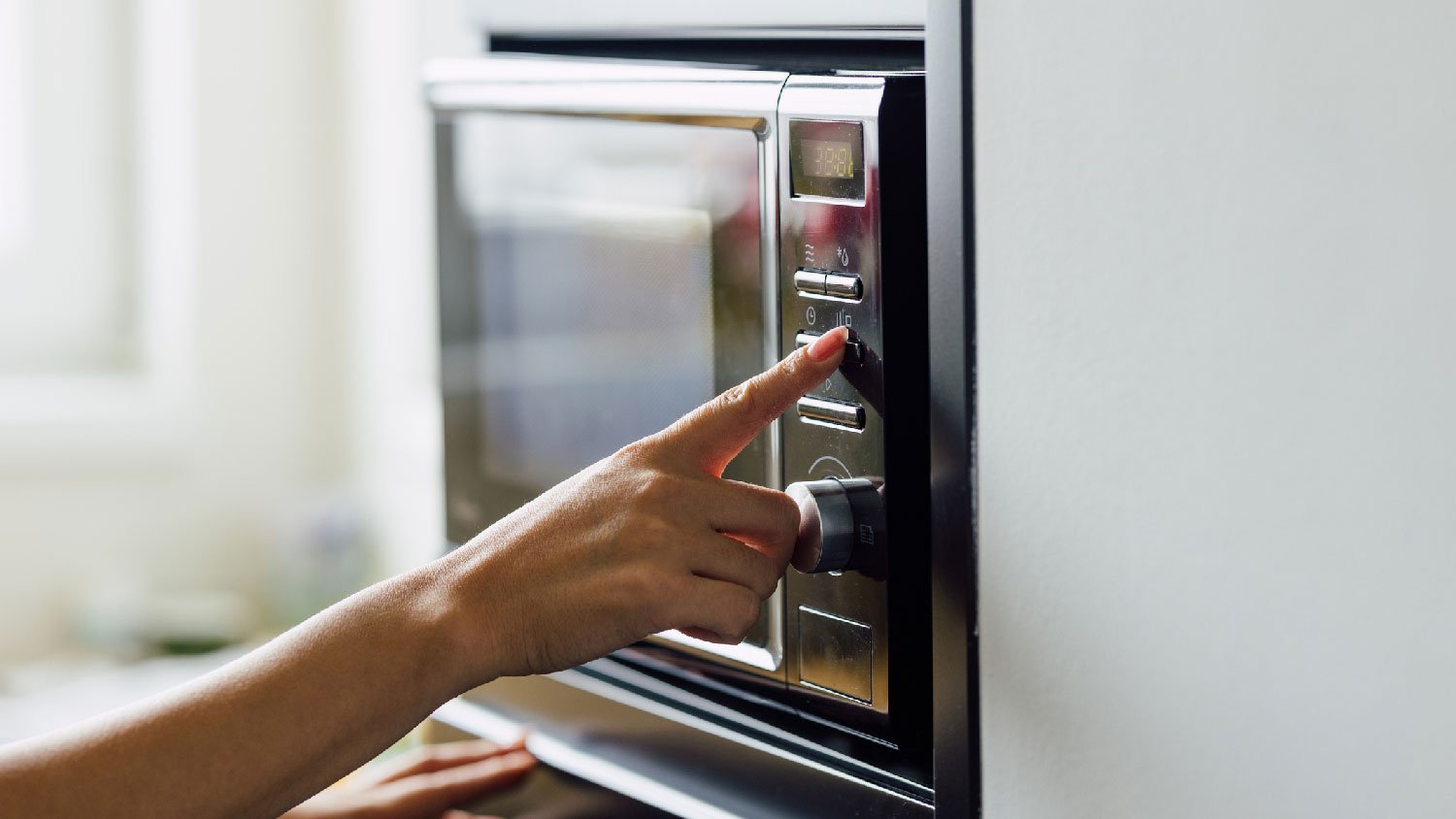How to Replace the Rubber Seal on a Front-Load Washing Machine
Seal the deal with a brand new rubber gasket


- Phillips and flathead screwdrivers
- Pliers
- Spring expansion tool (optional)
- New boot seal
- Liquid soap
Have you noticed a mildew smell in your washer that won’t go away after a thorough cleaning? Or worse yet, a leak on the floor in the middle of a cycle? In both instances, there’s a good chance you need to replace the rubber seal on your washer—a common washing machine repair. If you have a front-load washer, this guide will help walk you through the different steps to get your machine back in service.
Preparing to Replace the Door Boot on a Front-Load Washer

First, buy the part from the manufacturer. This will help ensure you have the right seal for the washer model, as they're not all made the same.
Also, a dry workspace is best for this project. Wipe down your washer if there’s any moisture before you begin work.
Pull the washer away from the wall (or out of the cabinet) so you can access the screws on the back. Now, you’re ready to get started.
Unplug the Front-Load Washer and Turn Off the Water
Unplug the washer and turn off the electricity to the outlet on your circuit breaker. This is a very important step to avoid accidental electrocution.
Next, turn off the water supply to your washer. Look beside the machine on the wall to find the cold and hot water valves. Turn both of them 90 degrees to shut off the water.
Remove the Front Panel, If Possible
There are several steps involved in removing the front panel of your washer. If you can’t remove the panel, proceed to step three. Take a picture of the current setup so you know how to reinstall the panel later.
Unscrew the top panel. The screws are on the top back of the machine. Tug the panel gently and pull up.
Pull out the detergent dispenser drawer. Press down on the unlocking tab to remove it.
Remove the control panel. The screws are on the top front of the machine. Lift the plastic tabs and pull up gently—but undo the wiring harnesses before you give it a big yank.
Locate the access cover on the front of the washer. Separate the drain hose from the clip, and unscrew the plastic housing.
Open the washer door and unscrew the few screws on the right side of the door. This allows you to access the clamp that’s holding the seal in place. Continue to step four.
If You Can’t Remove the Panel, Work Through the Front Opening
If you can’t remove the front panel on your washer, you’ll have to work through the front opening. This supreme lack of space can complicate the project, so you might consider hiring a pro to do the job or use a spring expansion tool.
Remove the Outer Clamp
The outer clamp has a spring system which can make it difficult to remove. First, figure out where the spring is. Usually, it’ll be at the bottom center of the drum. Insert a flat-head screwdriver between the seal and the clamp to jiggle it loose, or use a spring extension tool.
Once you remove the clamp, tug the edges of the seal and pull it off the groove. Push it inside the washer.
It’s now time to remove the front panel. Unscrew the screws that are on the top front of the washer. As you pull the panel down, take care not to accidentally pull the hose or door switch.
Remove the Inner Seal Clamp and Seal
Now that you’ve removed the front panel, you can access the seal. Before you can remove the seal, you need to disconnect the hose at the top.
Use pliers to loosen the clamp and slide it up the hose. Depending on the model of your machine, you may have two hoses: a circulation hose and a steam hose.
If the hose needs an extra budge to come out of the fitting, use a flat-head screwdriver.
Once the hose is disconnected, loosen the clamp for the inner seal at the top center of the drum. Use a socket to loosen the clamp and pull it off.
Remove the seal from the washer.
Take the nozzle fitting from the old seal and install it into your new seal.
Clean and wipe the inside of your washer where the seal sits.
Install the New Door Seal
Before you install the new rubber seal, take time to figure out the correct orientation of the gasket. A good place to start is by looking at the location of the nozzles and where they align to the hose. Most seals will also have arrow indicator marks, which you can use to align to the location of screws on your machine.
The easiest way to install your seal is first to lubricate it with small amounts of liquid soap. Then, start at the top center. Install the seal in the groove, and move in a clockwise or counter-clockwise direction until it is fully installed.
Install the Inner Door Seal Clamp and Reattach the Hose
To install the inner door seal clamp, align the screw on the top center and slide it onto the boot. Use a screwdriver and ratchet to tighten the clamp. Check to see if it’s properly installed by grabbing the seal and giving it a good tug.
Reattach the hose to the fitting, and use pliers to slide the clamp back down to the bottom of the hose.
Reinstall the Front Panel
Pull up your picture from step two for reference.
Grab your front panel and place it onto the bottom tabs.
Place the drain hose back into its housing and put the door switch wire harness in the right place.
Snap the panel back into place and then reinstall the screws. (Don’t forget the screws behind the access cover!)
Snap the drain hose back into its clip.
Reach behind the seal to access the door switch assembly. Pop it back into place before reinstalling the screws.
Reinstall the Outer Seal Clamp and Reassemble the Washer
Next, install the outer clamp by aligning the spring at the center bottom. Move counter-clockwise until you encounter resistance. At this point, use pliers to push the clamp into place.
Reinstall the control panel by placing it on the tabs and pushing it back. Before you snap it shut completely, reconnect the wire harnesses.
Push the detergent dispenser back in. Finally, reinstall the top panel by sliding it back on and screwing it into place.
DIY Washing Machine Gasket Replacement vs. Hiring a Pro
Although it’s possible to DIY your washer gasket replacement, it can be a time-consuming process if you don’t have any experience. Some steps, like removing the clamps and reinstalling the seal, sound straightforward but can take a lot of trial and error.
To avoid any frustration and wasted time, you can look for a washing machine repair service near you to ensure the repair gets done the first time correctly. The cost to replace a washer rubber gasket is $50 to $250 for the part, plus $75 to $150 for professional labor.
Frequently Asked Questions
It’s not a good idea to use your washing machine if it has a broken seal. Broken seals often cause water leaks, which can be a costly repair. It’s best to put laundry day on hold until you fix the seal.
Actually, removing mildew from your front-load washer is simple. Wipe down the gasket with a cloth and use Q-tips and a toothbrush for the hard-to-reach areas. During this cleaning process, use a 1:1 mixture of white vinegar and water to combat any mold.
You can also try running a hot cycle with a 1:1 mixture of one-quarter cup of baking soda and water in the detergent dispenser. But if mold growth is severe, it’s more efficient to install a brand new seal altogether.
Following a few basic tips for maintaining your front-load washer can extend your unit’s lifespan.
Clean your machine monthly and always use the correct detergent. (If your machine is High-Efficiency, only use HE detergent.)
Avoid fabric softener.
Leave the washer door open after a cycle to avoid moisture buildup.
Remove all of the wet clothes promptly, and wipe down the machine after each use.
Conduct an annual inspection yourself or hire someone to check that your machine is in tip-top shape. Proper maintenance means your machine will clean your clothes as best as possible, and you’ll prevent common issues like mold and mildew build-up on the seal or clogged filters from the water inlets.




- Window A/C Repair
- Microwave Repair
- Small Appliance Repair Services
- Garbage Disposal Repair
- Emergency Appliance Repair Companies
- GE Appliance Repair
- Samsung Appliance Repair
- Samsung Microwave Repair
- Whirlpool Repair
- Maytag Appliance Repair
- Kitchenaid Mixer Repair
- Kenmore Appliance Repair
- Kenmore Vacuum Repair
- Bosch Appliance Repair
- Kenmore Refrigerator Repair
- LG Appliance Repair Services
- GE Microwave Repair
- Electrolux Appliance Repair
- Electrolux Vacuum Repair















